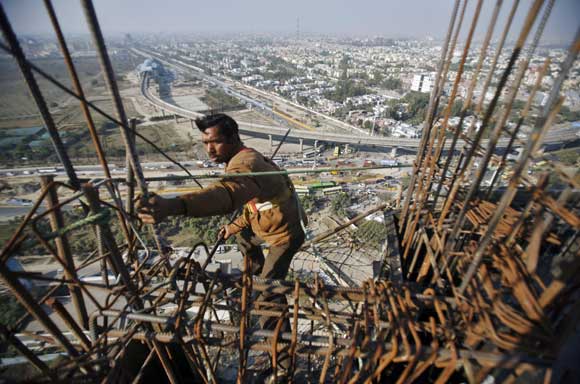 | « Back to article | Print this article |
Infrastructure? India needs $20 trillion in 20 years
Growing population levels and rising urbanisation will triple the spending on infrastructure in emerging markets such as India over the next two decades to $20 trillion, a University of Cambridge report says.
The report, 'The roots of growth: Projecting EM infrastructure demand to 2030', produced jointly by Cambridge Judge Business School and the Royal Bank of Scotland, predicts that the emerging world will need to spend $20 trillion dollars on infrastructure over the next 20 years.
Click NEXT to read further. . .
Infrastructure? India needs $20 trillion in 20 years
Asia should account for the bulk of infrastructure demand followed by Emerging Europe, Latin America, Africa and West Asia, a press release by the Cambridge Judge Business School says.
Imran Ahmad, an Emerging Markets Strategist, says: "One of the key things the study shows is that, especially in Asia and West Asia we have seen regions and countries
that have got plans on strong balance sheets so they can afford to meet their infrastructure needs.
"In other countries like South America and Africa, there are clearly more challenges to meet the financing needs in those places."
Click NEXT to read further. . .
Infrastructure? India needs $20 trillion in 20 years
A major conclusion in the report is that investors who ignore the consequences of the EM infrastructure boom do so at their own peril, missing the opportunity to identify one of the hidden forces that power nations.
"A key point of this report is showing investors why it's important to diversify into an emerging market but also who the winners and losers are going to be.
"History shows us that those countries who invest in infrastructure tend to be more productive, they tend to be more competitive and therefore they deliver higher growth rates," Ahmad says.
Click NEXT to read further. . .
Infrastructure? India needs $20 trillion in 20 years
Over half of all spending needs ($12.7 trillion) are expected to be related to electricity generation, followed by roads ($4.2 trillion), mobile telecommunications ($2.0 trillion), fixed phone lines ($0.2 trillion) and rail ($0.2 trillion).
While Asia will see the highest total demand for infrastructure, Africa should generally enjoy the highest growth rates due to unprecedented shifts in its demographic makeup and under capacity.
Emerging Europe for its part will likely experience the lowest growth rates as falling and ageing populations reduce the need for large infrastructure investments.



